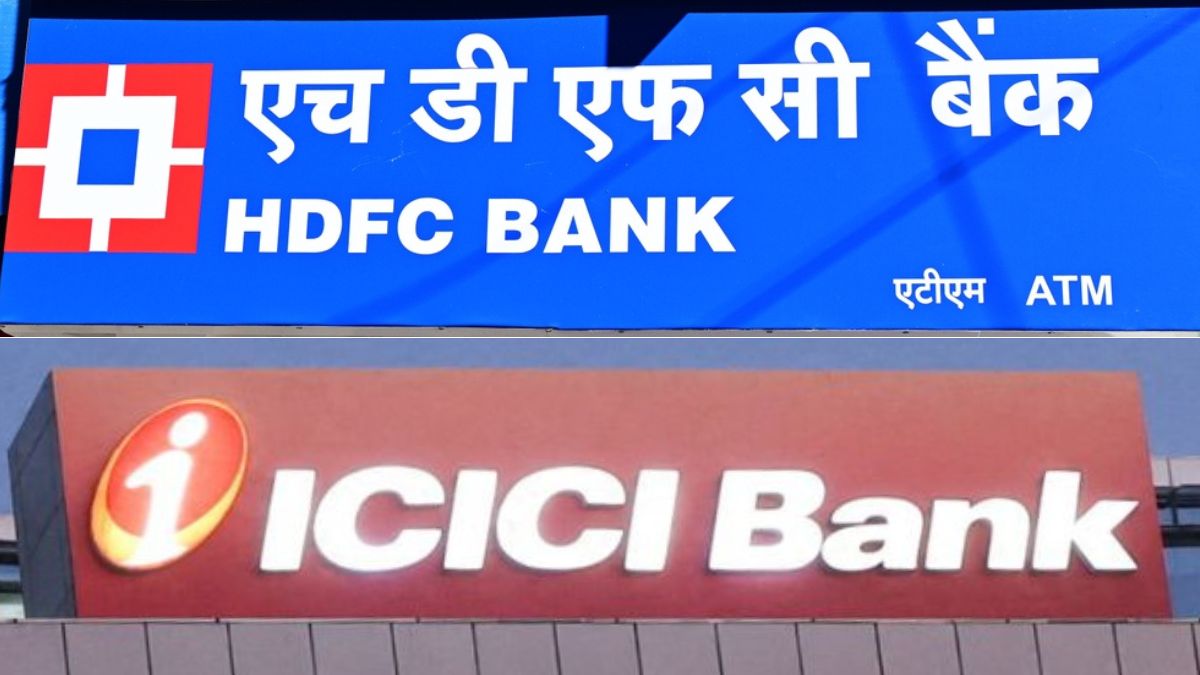ICICI vs HDFC Bank Q2 earnings: Steady growth, improving asset quality
 Representative Image
Representative Image
India's two largest private sector lenders, HDFC Bank and ICICI Bank, announced their September quarter earnings on Saturday, October 18, revealing divergent growth trajectories despite both banks maintaining strong financial fundamentals and improving asset quality metrics.
HDFC Bank, the country's largest private lender, reported a consolidated net profit of Rs 19,611 crore for the July-September quarter, while on a standalone basis, profit reached Rs 18,641 crore—marking an 11 per cent year-on-year increase.
The bank's net interest income, representing the difference between interest earned on loans and paid on deposits, rose 5 per cent to Rs 31,552 crore from Rs 30,114 crore in the same period last year.
HDFC Bank asset quality
What stood out in HDFC Bank's performance was the significant improvement in asset quality. The gross non-performing assets (NPA) ratio—essentially the proportion of loans where borrowers have stopped making payments—fell to 1.24 per cent as of September 30, down from 1.40 per cent three months earlier and 1.36 per cent a year ago. The net NPA ratio also declined to 0.42 per cent from 0.47 per cent in the previous quarter. This improvement signals that fewer loans are going bad, strengthening the bank's overall financial health.
However, provisions for potential loan losses increased 30 per cent year-on-year to Rs 3,500 crore, compared to Rs 2,700 crore in the same quarter last year—though this figure was substantially lower than the Rs 14,441 crore set aside in the preceding June quarter. The sharp drop in quarterly provisions reflects management's cautious approach to setting aside buffers during uncertain economic times.
ICICI is not far behind
ICICI Bank, the second-largest private lender, posted a consolidated profit of Rs 13,357 crore for the quarter, representing a 3.2 per cent growth from Rs 12,948 crore in the year-ago period. On a standalone basis, the bank's profit rose 5.2 per cent to Rs 12,359 crore from Rs 11,746 crore last year.
ICICI Bank's core operating strength showed through in its net interest income, which grew 7.4 per cent year-on-year to Rs 21,529 crore from Rs 20,048 crore.
The bank maintained a healthy net interest margin of 4.30 per cent, though slightly down from 4.36 per cent a year earlier. This margin compression reflects the competitive pressure on lending rates in the banking sector.
Credit growth remained robust at ICICI Bank, with domestic net advances expanding 10.6 per cent year-on-year and 3.3 per cent sequentially.
The retail loan portfolio, which includes home loans, personal loans, and vehicle financing, grew 6.6 per cent annually and now comprises 52.1 per cent of the total loan book. Total deposits increased 7.7 per cent year-on-year to Rs 16.13 lakh crore.
ICICI Bank's asset quality also showed marked improvement. The gross NPA ratio declined to 1.58 per cent at September-end from 1.67 per cent in June and 1.97 per cent a year ago. Net NPAs improved to 0.39 per cent from 0.41 per cent in the previous quarter and 0.42 per cent last year. Provisions dropped significantly to Rs 914 crore from Rs 1,233 crore a year earlier and Rs 1,815 crore in the preceding quarter.
HDFC Bank vs ICICI Bank
The contrasting profit growth rates—HDFC Bank's double-digit expansion versus ICICI Bank's mid-single-digit rise—echo the different strategic priorities of both lenders.
HDFC Bank benefited from a one-time gain of Rs 9,128 crore in the first half of fiscal 2026 from selling a stake in its subsidiary HDB Financial Services during its initial public offering.
ICICI Bank, meanwhile, focused on operational efficiency, with its core operating profit growing 6.5 per cent to Rs 17,078 crore.
Both banks expanded their physical presence during the quarter. HDFC Bank operates 7,869 branches, while ICICI Bank added 263 branches in the first half, taking its network to 7,246 branches and 10,610 ATMs across India.
The strong results from both lenders come at a time when India's banking sector is navigating challenges, including slower deposit growth relative to credit expansion and margin pressures from competitive lending rates. Yet the asset quality seems to be improving across both banks.
Business